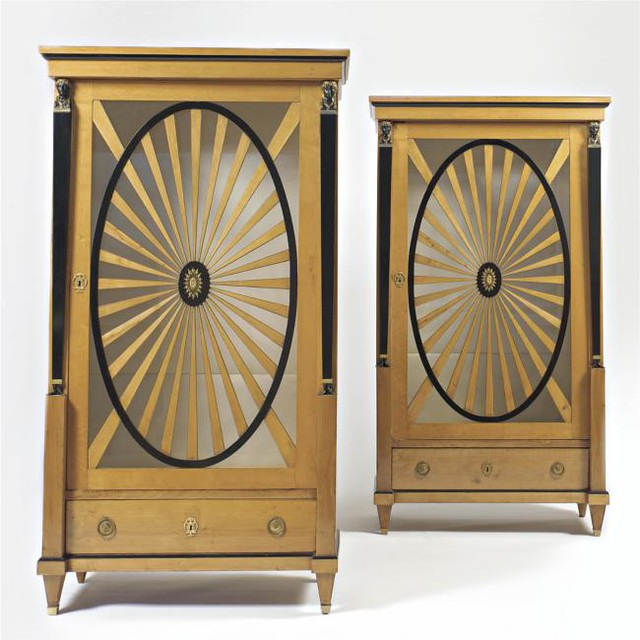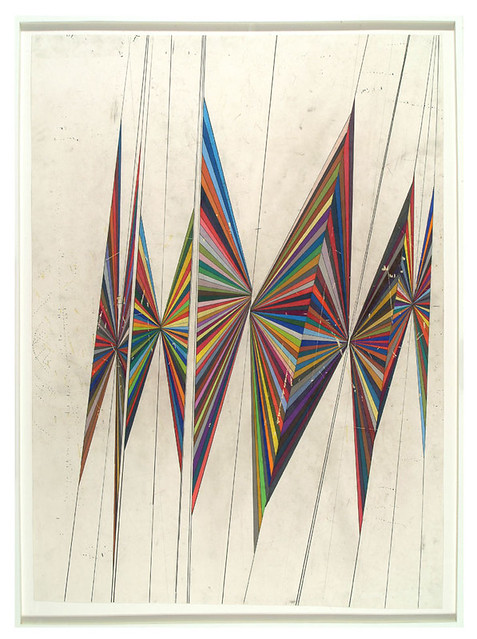Biedermeier was an influential style of furniture design from Germany during the years 1815-1848, based on utilitarian principles.
He (Mark Grotjahn) wanted to talk about how perspective skews perception and how paint adheres to surface.


"The Biedermeier style was a simplified interpretation of the influential French Empire Style of Napoleon I, which introduced the romance of ancient Roman Empire styles, adapting these to modern early 19th century households. Biedermeier furniture used locally available materials such as cherry, ash and oak woods rather than the expensive timbers such as fully-imported mahogany. Whilst this timber was available near trading ports such as Antwerp, Hamburg and Stockholm, it was taxed heavily whenever it passed through another principality. This made mahogany very expensive to use and much local cherry and pearwood was stained to imitate the more expensive timbers. Stylistically, the furniture was simple and elegant. Its construction utilised the ideal of truth through material, something that later influenced the Bauhaus and Art Deco periods."
Catherine Wagley on Mark Grotjahn. via here....
"I would recognize Grotjahn’s work anywhere because of its quirks. Obsession with perspective and symmetry may not be original but it has never quite looked the way Grotjahn makes it look–combining slightly cagey precision with paradoxically liberal painterliness. I like to think of Grotjahn as a big fan who found a signature not because he had something cataclysmic to say but because, like many artists before him, he wanted to talk about how perspective skews perception and how paint adheres to surface. To have a conversation, you need a voice. But you don’t always need an aggressive, groundbreaking clarion call."
please read the entire article here via Daily Serving...
---------------------------
